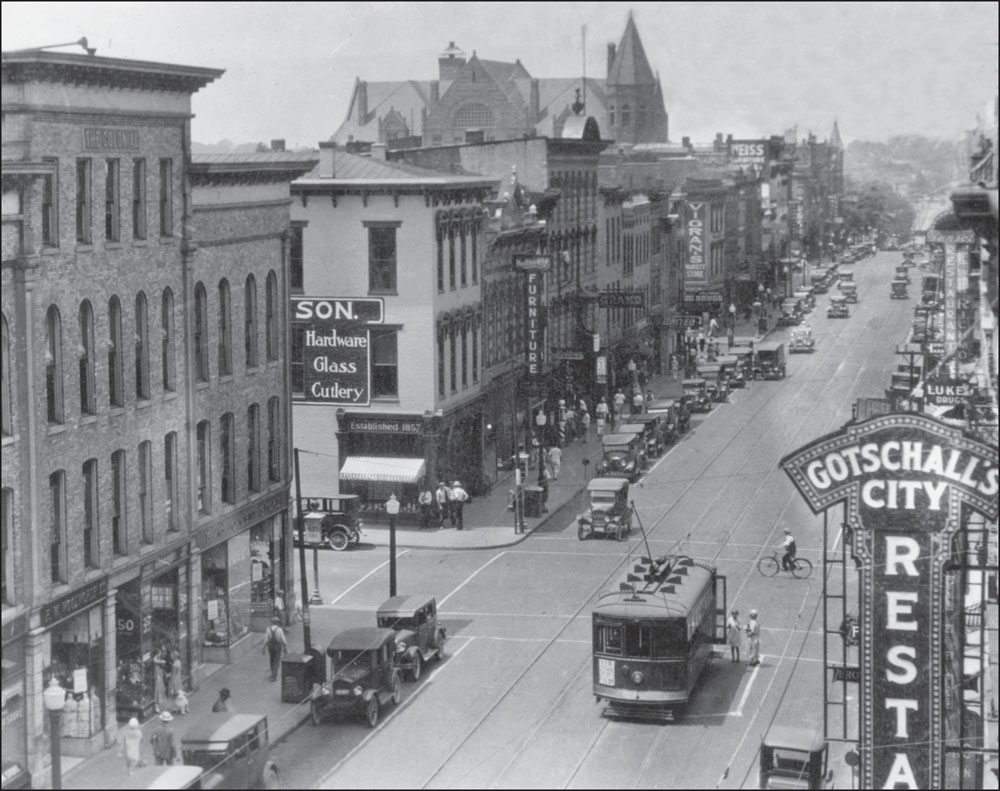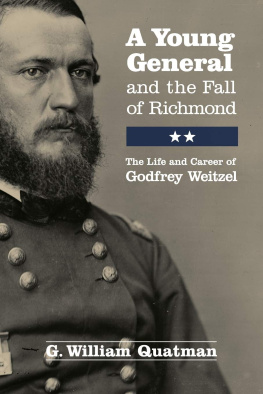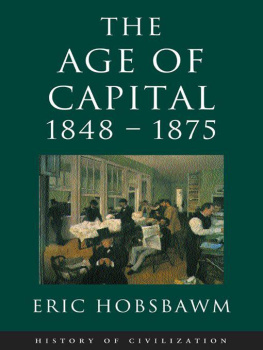Hamm Thomas D. - Richmond
Here you can read online Hamm Thomas D. - Richmond full text of the book (entire story) in english for free. Download pdf and epub, get meaning, cover and reviews about this ebook. City: Indiana;Richmond;Richmond (Ind, year: 2015, publisher: Arcadia Publishing, genre: Detective and thriller. Description of the work, (preface) as well as reviews are available. Best literature library LitArk.com created for fans of good reading and offers a wide selection of genres:
Romance novel
Science fiction
Adventure
Detective
Science
History
Home and family
Prose
Art
Politics
Computer
Non-fiction
Religion
Business
Children
Humor
Choose a favorite category and find really read worthwhile books. Enjoy immersion in the world of imagination, feel the emotions of the characters or learn something new for yourself, make an fascinating discovery.

- Book:Richmond
- Author:
- Publisher:Arcadia Publishing
- Genre:
- Year:2015
- City:Indiana;Richmond;Richmond (Ind
- Rating:3 / 5
- Favourites:Add to favourites
- Your mark:
- 60
- 1
- 2
- 3
- 4
- 5
Richmond: summary, description and annotation
We offer to read an annotation, description, summary or preface (depends on what the author of the book "Richmond" wrote himself). If you haven't found the necessary information about the book — write in the comments, we will try to find it.
Richmond — read online for free the complete book (whole text) full work
Below is the text of the book, divided by pages. System saving the place of the last page read, allows you to conveniently read the book "Richmond" online for free, without having to search again every time where you left off. Put a bookmark, and you can go to the page where you finished reading at any time.
Font size:
Interval:
Bookmark:

IMAGES
of America
RICHMOND

DOWNTOWN. This c. 1930 view looks westward down Richmonds Main Street toward the Main Street Bridge, which crosses the Whitewater River Gorge. Automobiles, bicycles, pedestrians, and a streetcar attest to the bustling life in the city. Above it all towers the massive Wayne County Courthouse. (Wayne County Historical Museum.)
ON THE COVER: The City of Richmond carries a group of young people on an unknown outing. This location is the corner of Eighth and Main Streets, looking toward the southeast corner and the old Kelley-Hutchinson Building. The intersection is the literal and figurative center of the city; Main Street is part of US 40, the old National Road, and Eighth Street is part of US 27, which stretches from Michigan to Florida. (Morrisson-Reeves Library.)
IMAGES
of America
RICHMOND
Susan E. King and Thomas D. Hamm

Copyright 2015 by Susan E. King and Thomas D. Hamm
ISBN 978-1-4671-1410-3
Ebook ISBN 9781439652411
Published by Arcadia Publishing
Charleston, South Carolina
Library of Congress Control Number: 2015932289
For all general information, please contact Arcadia Publishing:
Telephone 843-853-2070
Fax 843-853-0044
E-mail
For customer service and orders:
Toll-Free 1-888-313-2665
Visit us on the Internet at www.arcadiapublishing.com
CONTENTS
ACKNOWLEDGMENTS
Nearly all the images included here belong to three institutions and will be marked as follows: Earlham College (EC), Morrisson-Reeves Library (MRL), and the Wayne County Historical Museum (WCHM). The authors acknowledge the assistance of their colleagues at Earlham and Morrisson-Reeves and extend special thanks to Jim Harlan at the Wayne County Historical Museum for his enthusiastic cooperation and support.
INTRODUCTION
Richmond, Indiana, is many things: county seat, regional economic and health-care center, college town, and, according to a recent survey, one of the most livable small cities in Indiana. While people have lived in the area for thousands of years, our knowledge of what would become Richmond begins a little over 200 years ago.
When the first European Americans explored the Whitewater Valley in the late 18th century, they found no permanent Native American settlements; instead, the Shawnee, Delaware, and Miami peoples used the lands around what would become Richmond as hunting grounds. The first permanent settlers in what would become Wayne County were Richard Rue, George Holman, and Thomas McCoy and their families on Elkhorn Creek in the spring of 1805.
Early in 1806, Andrew Hoover (17521834), a Quaker originally from North Carolina then living on the Stillwater River north of Dayton, Ohio, sent his son David to follow a section line west into the Indiana Territory. When David reached the Middle Fork of the Whitewater River, he found that spring water, timber, and building rock appeared to be abundant, and the face of the country looked delightful. It was a land of promise. His reports drew other North Carolina families. In 1806, those of Jeremiah and Catherine (Morrisson) Cox and John and Letitia (Trueblood) Smith arrived. By 1809, a considerable settlement of Quakers, mostly from North Carolina, had formed, and the community became the center of a large Quaker settlement. By 1860, Richmond, Indiana, had come to rival Philadelphia, Pennsylvania, as a Quaker spiritual and population center. Although they were a minority of the towns residents by the 1830s, the Friends continued to set its moral and religious tone well into the 20th century.
Most of Richmonds early residents came from the South, predominately North Carolinians, followed by Virginians and Kentuckians. A few merchants from New York and New England were attracted by the towns commercial possibilities, and Quakers from the Delaware Valley came to join the large Quaker settlement. African Americans, both free and fugitives from slavery, were early residents, part of a pattern of free black communities in Ohio and Indiana near Quaker settlements.
As the population grew after 1830, it became more diverse. The construction of the National Road and the Whitewater Canal in the 1830s and railroads in the 1850s attracted significant numbers of Irish and German immigrants. They added Lutheran and Roman Catholic congregations to the citys churches and also augmented the towns cultural diversity. Conflicts over Sabbath observance and saloons pitted many immigrants against more staid native residents.
Richmond grew steadily, both in population and geography, for 150 years. By 1900, manufacturing had become the foundation of the citys growth and prosperity, although in the 20th century many locally owned firms gave way to national corporations. The Richmond Cracker Company, for example, became successful enough to merge into Nabisco. Richmonds population tripled, from 2,070 to 6,608 between 1840 and 1860, and had doubled again to 12,742 by 1880. By 1920, it had doubled again, to 26,765. It peaked in 1960, when the census gave Richmond 44,419 inhabitants. It has fallen since then, to 36,812, although much of this decline reflects the development of housing subdivisions in the surrounding townships. Once a cluster of houses on the east bank of the Whitewater River, the city now stretches west of the Whitewater River to the Wayne Township line and east to the Ohio state line.
Richmond also became more diverse in the 20th century. It attracted a small population of Italian immigrants between 1900 and 1920. Large numbers of Southerners, mainly from Kentucky and Tennessee, came to look for jobs in the citys factories from World War I until the 1960s. A local joke asked, What are the three things they teach in a Kentucky school? Reading, Writing, and Route 27 north to Richmond.
Richmond could also point with pride to the achievements of natives and residents who made good both locally and in the larger world. They include a Nobel laureate (Wendell M. Stanley), professional athletes (Lamar Lundy, Weeb Ewbank), cartoonists (Gaar Williams), pioneering feminists (Dr. Mary F. Thomas), and millionaires (Daniel G. Reid, William B. Leeds). Some were less admirable: Peoples Temple founder Jim Jones, of Jonestown notoriety, was a Richmond High School graduate.
In short, the history of Richmond is rich.
One
PIONEERS,
18061835
The settlement that the Quakers founded was first known as Smithsville, after John Smith, who laid out some of his land in town lots in 1816. But, as David Hoover remembered, The name not giving general satisfaction, Thomas Roberts, James Pegg, and myself were chosen to select another. Roberts proposed Waterford; Pegg, Plainfield, and I, Richmond. The last was approved by the lot-holders.
Originally, the settlement was in Dearborn County. By 1811, the population justified forming a new county, which was named Wayne.
Richmond got a post office in 1818, and in 1824 the towns newspaper, the Public Leger, reported that the population was 453. The town boasted 8 Dry Goods Stores, 3 large and respectable Taverns... a Printing Office, 7 blacksmiths, 4 hatters, 4 cabinet-makers, 6 shoe-makers, 3 tailors, 3 coopers, 3 potters, 1 gunsmith, 1 saddler, 1 pump-maker, 1 distillery, besides a large number of carpenters, brick and stone masons, plasterers. The editor noted two physicians but boasted, Of lawyers we have NOT ONE.
Next pageFont size:
Interval:
Bookmark:
Similar books «Richmond»
Look at similar books to Richmond. We have selected literature similar in name and meaning in the hope of providing readers with more options to find new, interesting, not yet read works.
Discussion, reviews of the book Richmond and just readers' own opinions. Leave your comments, write what you think about the work, its meaning or the main characters. Specify what exactly you liked and what you didn't like, and why you think so.









